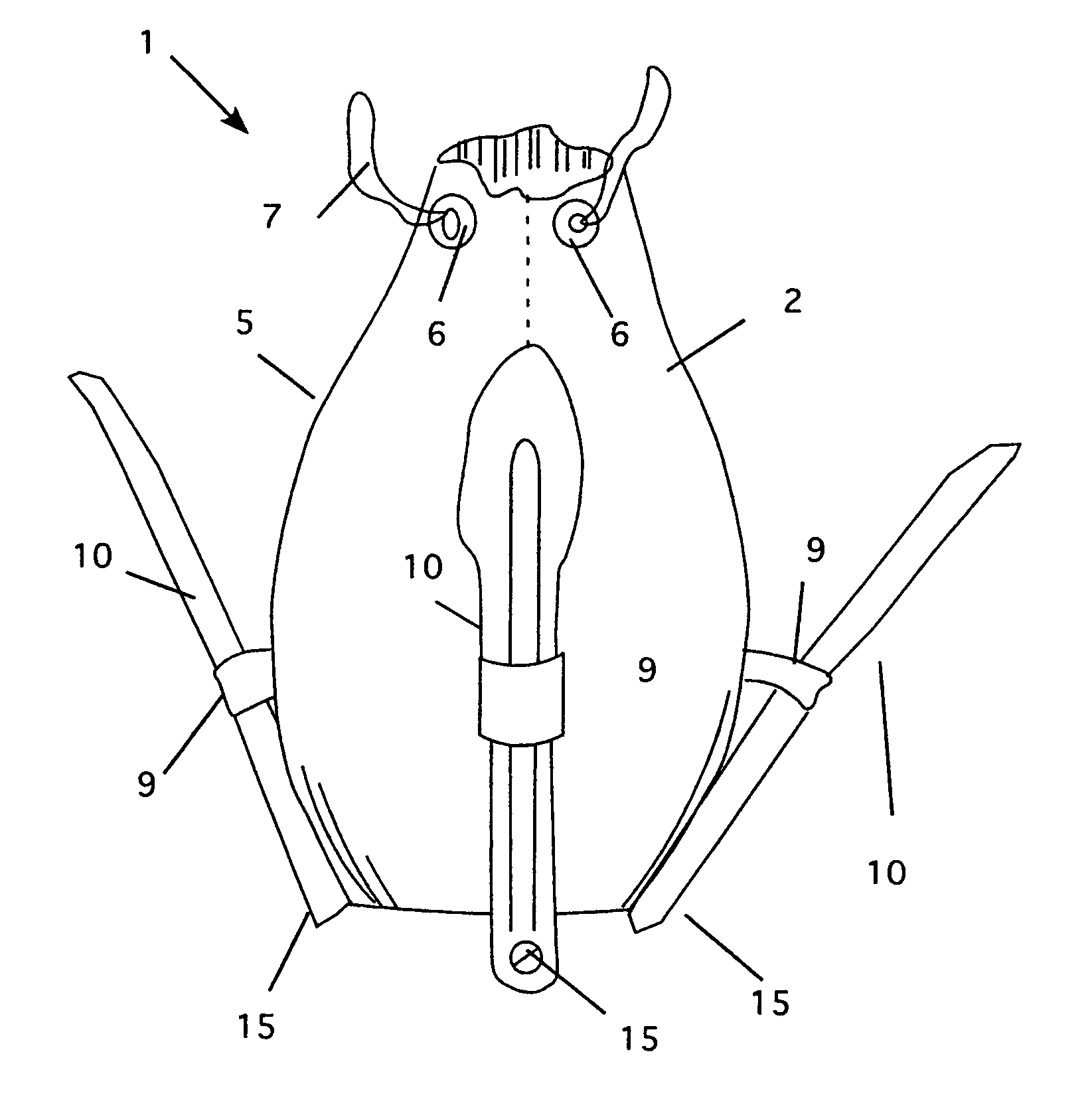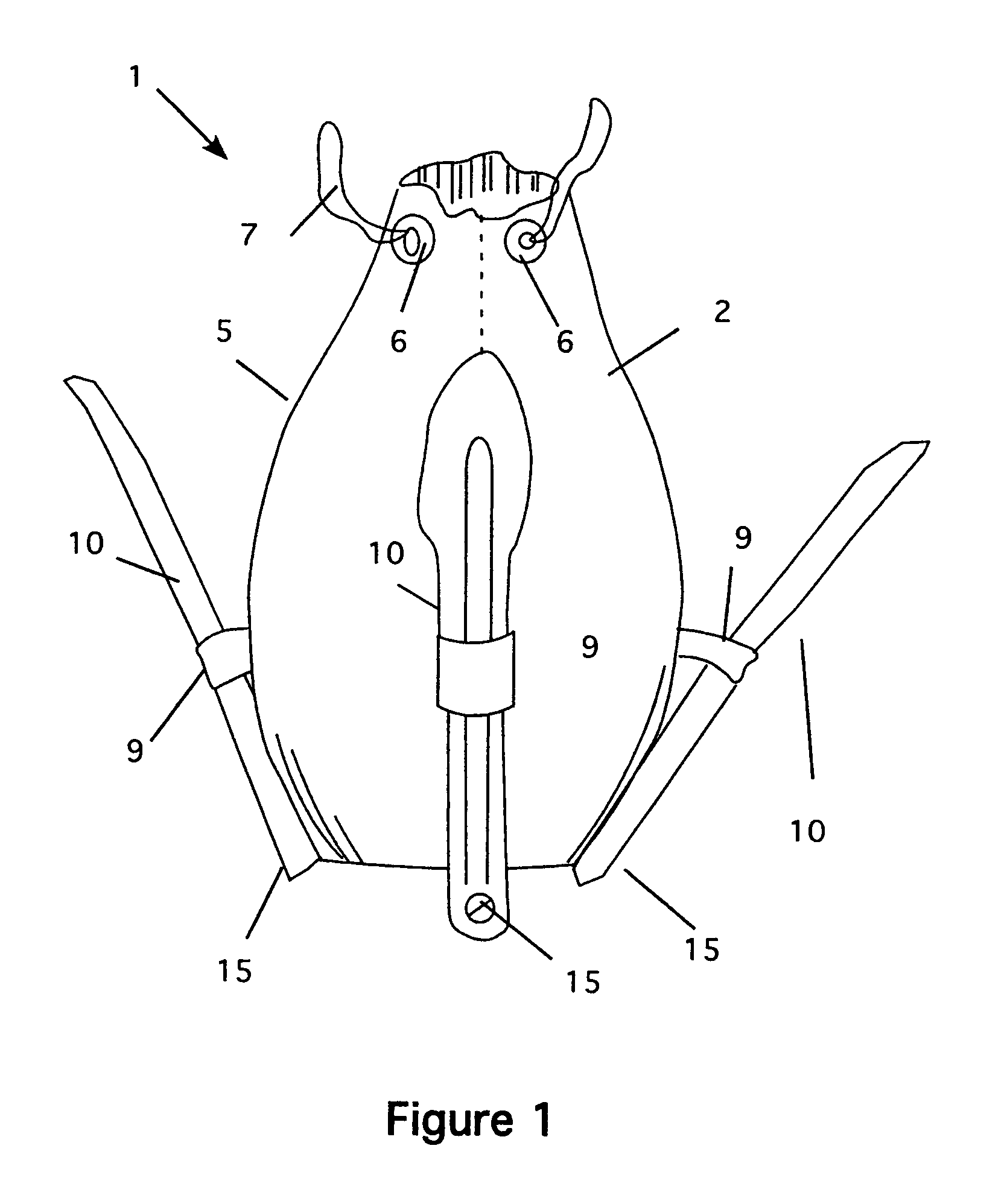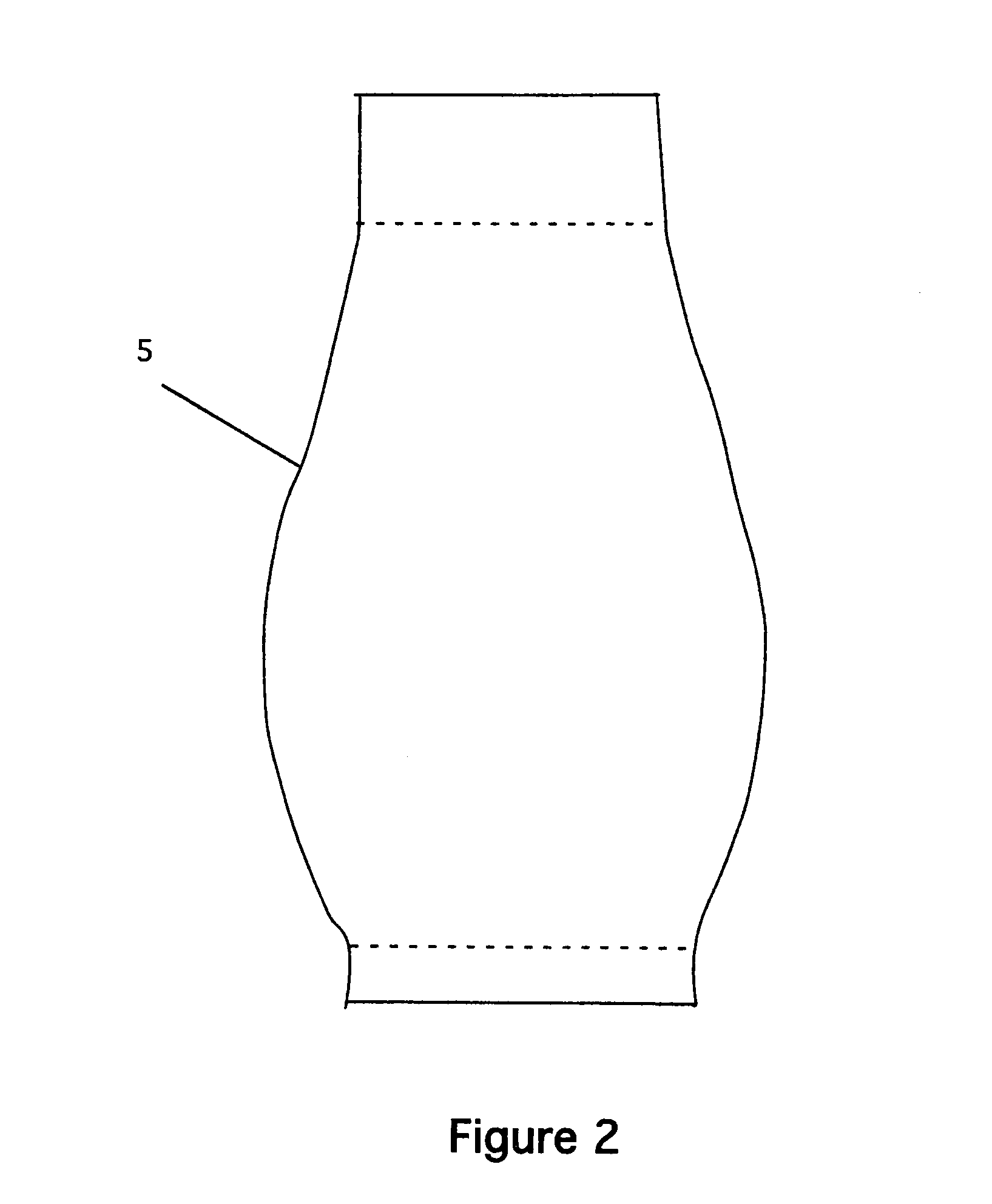Lightweight anchor for small watercraft
a technology for watercraft and anchors, which is applied in the direction of anchors, waterborne vessels, vessel construction, etc., can solve the problems of watercraft damage, heavy anchors, and bulky anchors,
- Summary
- Abstract
- Description
- Claims
- Application Information
AI Technical Summary
Benefits of technology
Problems solved by technology
Method used
Image
Examples
Embodiment Construction
[0025]The assembled anchor is illustrated in FIG. 1. The materials utilized for this anchor are hard cast flukes and a soft ballast container with associated fabric, webbing, grommets, and heavy drawstring cord for closing the anchor after filling and during use. As shown in FIG. 1, the device 1 has a bag portion 2 and a number of flukes 10. In the preferred embodiment, the number of flukes is 3, although fewer or more can be used, if desired.
[0026]The ballast bag 2 is the heart of the device. In the preferred embodiment, it is composed of five pieces of pliable, strong fabric, such as a tight weave polyester mesh. Four of the pieces make up the side panels 5. In the preferred embodiment, three flukes 10 are attached to the panels at their base by fasteners 15 or alternatively, by web straps, as discussed below. To secure the flukes in a generally upright position, lengths of webbing 9 are attached as shown. The webbing wraps around the flukes. As noted, in the preferred embodiment,...
PUM
 Login to View More
Login to View More Abstract
Description
Claims
Application Information
 Login to View More
Login to View More - R&D
- Intellectual Property
- Life Sciences
- Materials
- Tech Scout
- Unparalleled Data Quality
- Higher Quality Content
- 60% Fewer Hallucinations
Browse by: Latest US Patents, China's latest patents, Technical Efficacy Thesaurus, Application Domain, Technology Topic, Popular Technical Reports.
© 2025 PatSnap. All rights reserved.Legal|Privacy policy|Modern Slavery Act Transparency Statement|Sitemap|About US| Contact US: help@patsnap.com



